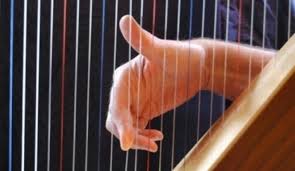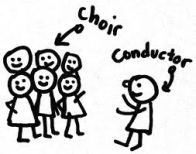As teachers, we all have students who want to cancel their private lesson because they are not prepared…they didn’t practice. When they (or their moms) call to cancel, I tell them this is a slippery slope; one week of not practicing turns into two, and before they know it, they don’t want to come to lessons anymore because their skills have gotten away from them.
I encourage them to come to that lesson anyway; even though they have missed an opportunity for muscle memory growth that week, it doesn’t mean you have nothing to teach them. Don’t yell at them! I don’t mean you shouldn’t admonish them, but don’t scare them into not wanting to come back.
Think of it as an opportunity to use their instrument to explore a new facet of music theory, to learn more about the composer of their piece, and yes, to find out just how important that lost week of muscle memory was….I have a lever harp in my studio that I use sometimes in those cases; I strongly believe that transference of skills (i.e.,relation of notes on the piano to notes on the harp) facilitates a deeper understanding of music theory and appreciation.





Comments